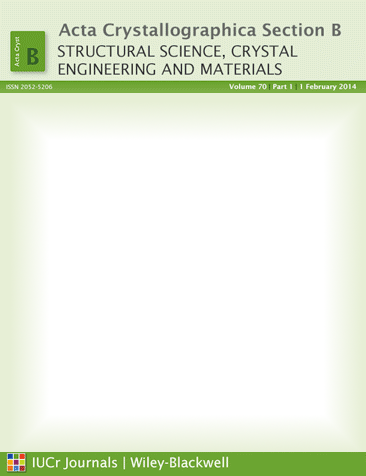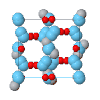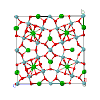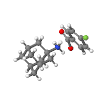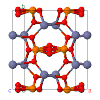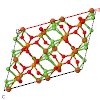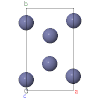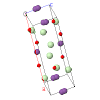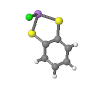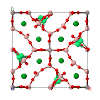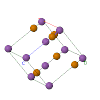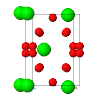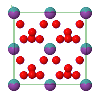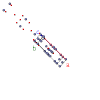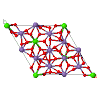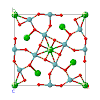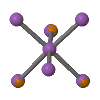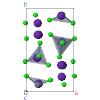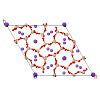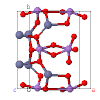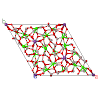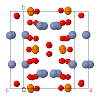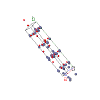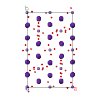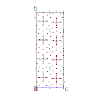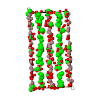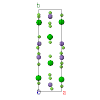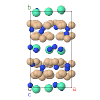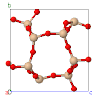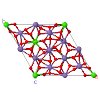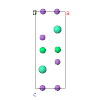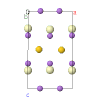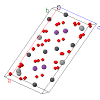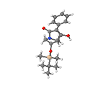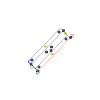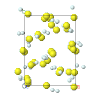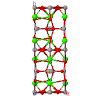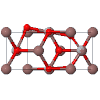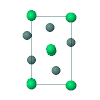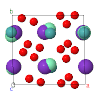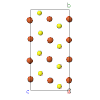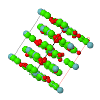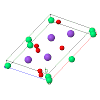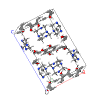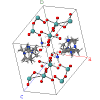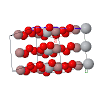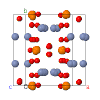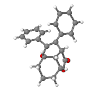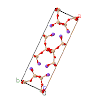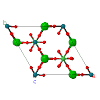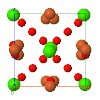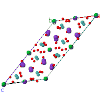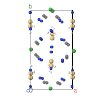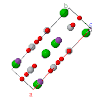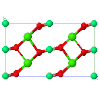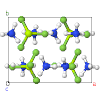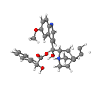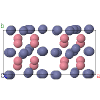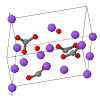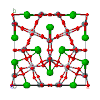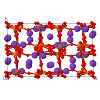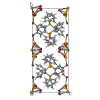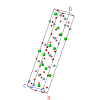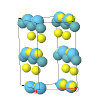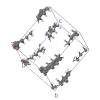modulated structures in Acta Cryst. B
About modulated structures
In general, a crystal structure exhibits periodicity in three-dimensional space that is generated by translational symmetry. However, there is a broad class of structures, named aperiodic crystals [Janner & Janssen (2014). Acta Cryst. B70, 617-651], which exhibit long-range order without lattice translation symmetry. Among them we find incommensurately modulated phases, incommensurate composites and quasicrystals. We focus here on incommensurately modulated structures: these produce additional sharp Bragg reflections that cannot be described in terms of only three hkl indices. However, when the description of the structure is extended to four or more dimensions (four or more indices are used for indexing the Bragg reflections), it can be seen that the structure is indeed 'periodic' (in higher-dimensional 'superspace'). This is the basis of superspace crystallography, which is used to describe all aperiodic crystals.
The term 'modulation' reflects the variation of the atomic sites (positions and occupancies) with respect to an ideal average periodic structure (more formally, it derives from the use of atomic modulation wavefunctions in the mathematical description of these structures). When the wavelength of the modulation is incommensurate with the average periodic lattice, it causes disruption of the long-range periodicity. An incommensurately modulated structure is more than just a structure derived from mathematical treatment of the variances in atomic positions and occupancies – it can reveal the causes of the atomic displacements and provide insights to the interesting properties (magnetic, superconducting etc.) that many of these structures possess.
The study of incommensurately modulated structures and the development of the theory is an active and healthy field in crystallography, as reflected by various publications of the IUCr. The articles highlighted below have associated data (msCIF files) that enable visualization of the impact of the modulation on the atomic structure (a recent development from Jmol – see below). Searching the IUCr Journals archives returns more than 2000 articles referring to modulated structures. In addition, the theory and supporting applications and file formats (msCIF mentioned above) are documented in the International Tables for Crystallography (see the 'Further reading' links on this page).
About the images below
The images below were generated from msCIF data using Jmol (version 14.0.5; see the Jmol documentation for details of this functionality).
It is important to understand that the images below do not illustrate active vibrations or phonons. Atoms in these crystals are not moving in concert, or at least not as shown. Rather, in these crystals no two unit cells are identical. As the animation runs, you see all possible versions of the unit cell displayed by passing along the `modulation axis' (not shown). Any given frame in the animation may represent a unit cell remote from the previous frame.
One way to conceptualize what you are seeing is that the unit cell is a four-dimensional object that is being projected into three dimensions. The value of these animations is that you can quickly see how various atoms modulate in relation to each other – some atom pairs will maintain roughly the same distance apart throughout the crystal, while others will be separated by different distances in different unit cells.
Articles from IUCr Journals
 The first bismuth borate oxyiodide, Bi4BO7I: commensurate or incommensurate? Bismuth borate oxyiodide, Bi4BO7I
The first bismuth borate oxyiodide, Bi4BO7I: commensurate or incommensurate? Bismuth borate oxyiodide, Bi4BO7I





 journal menu
journal menu
